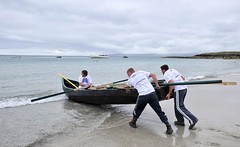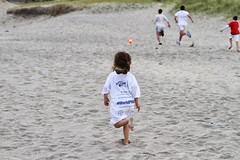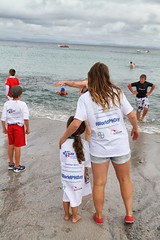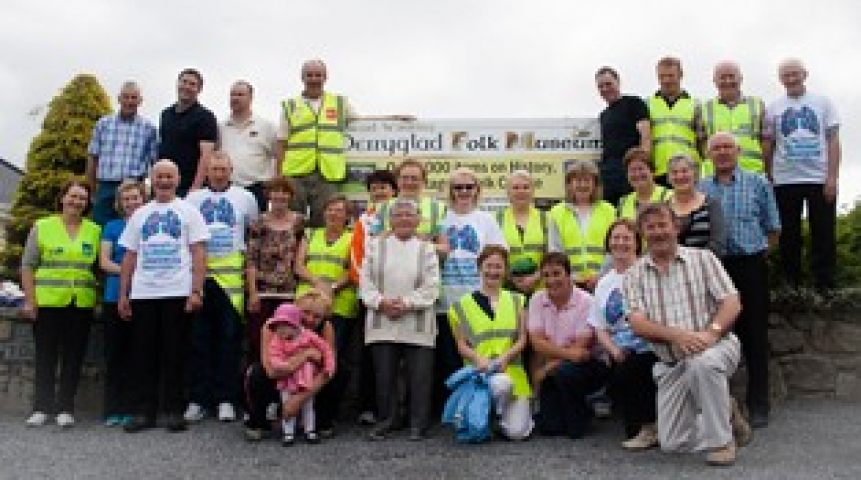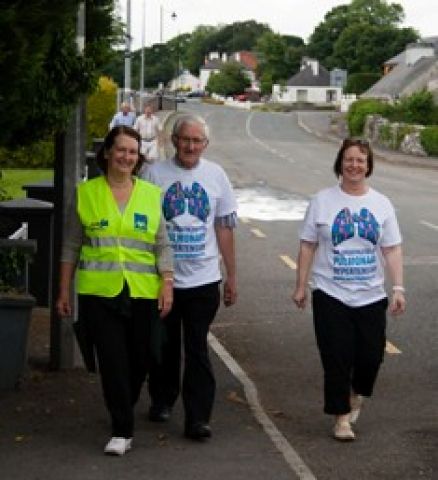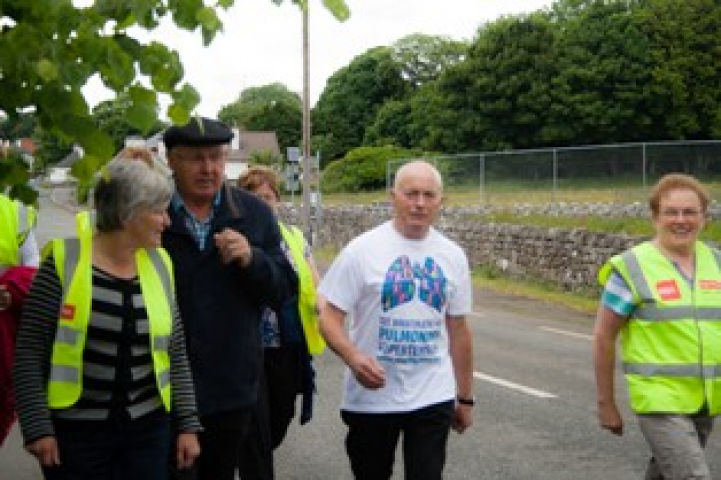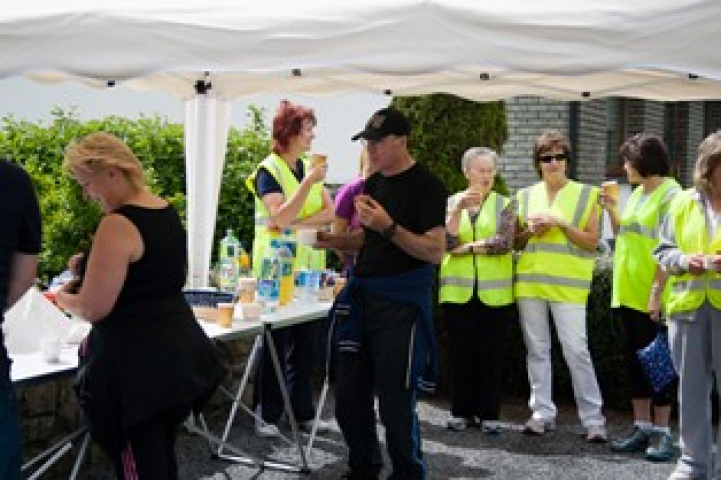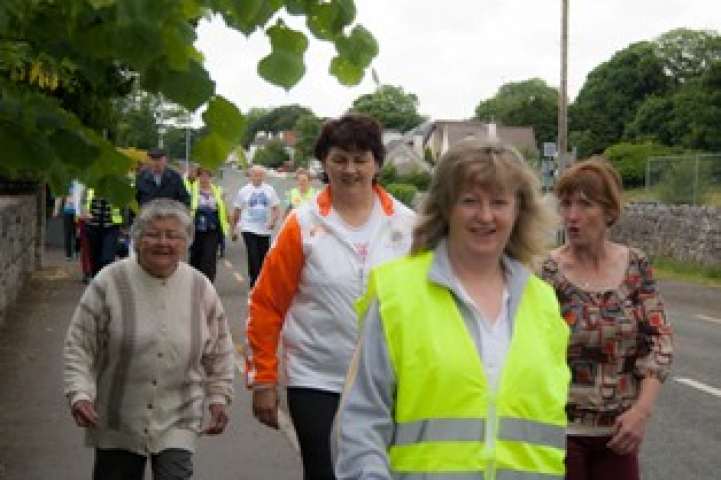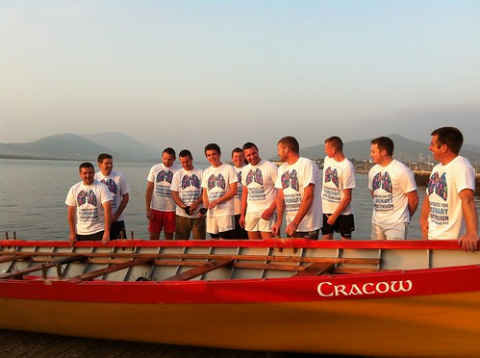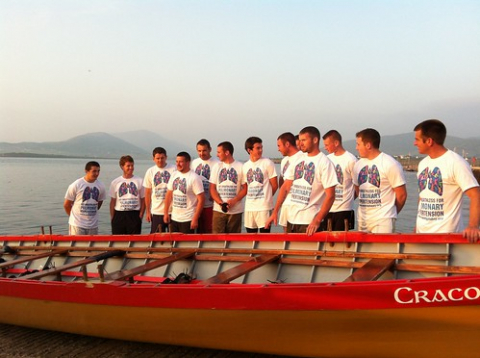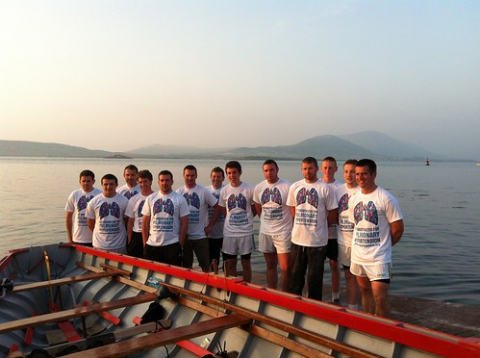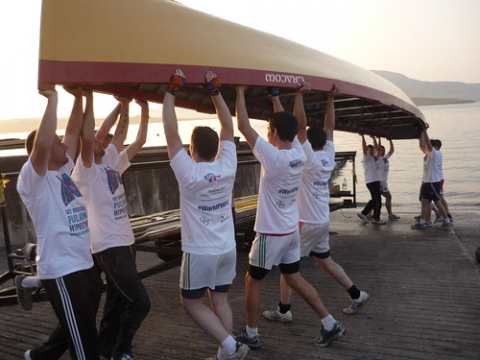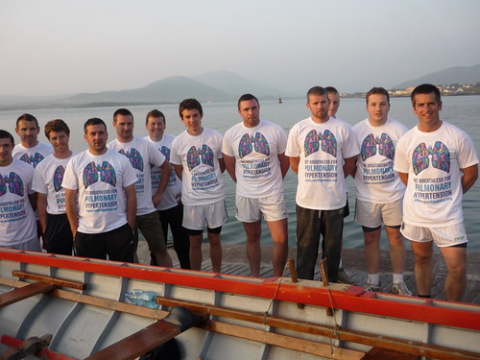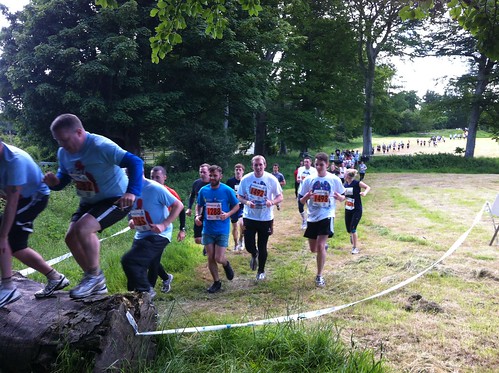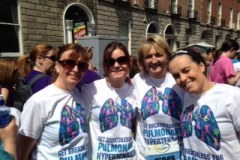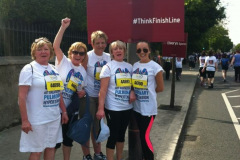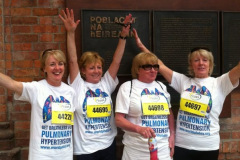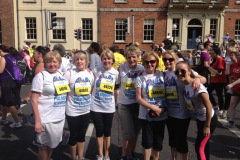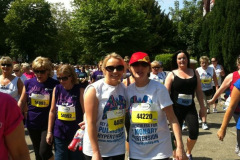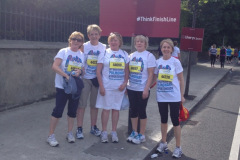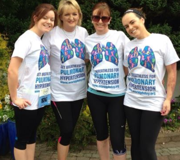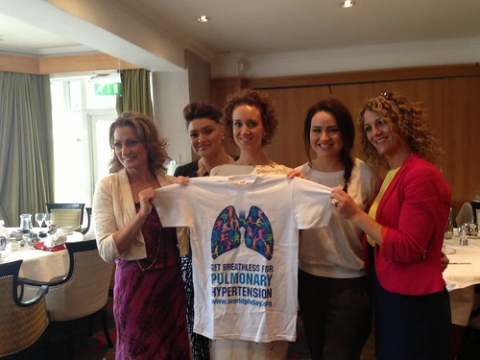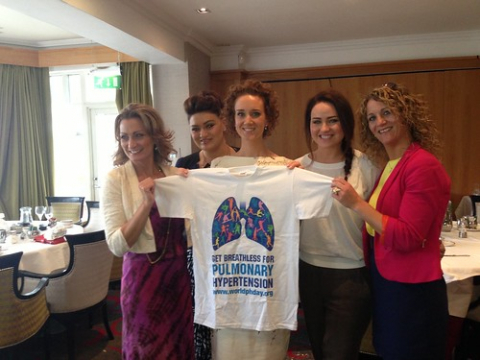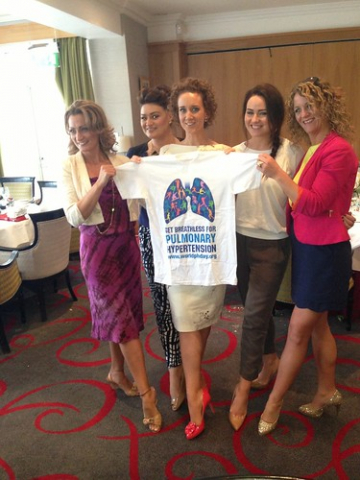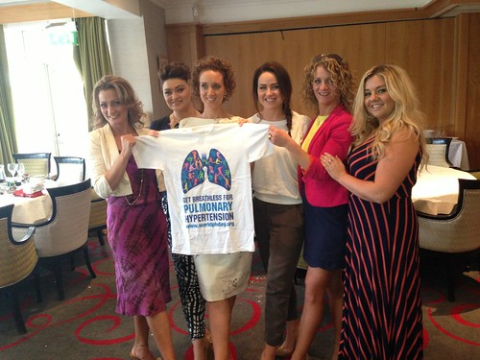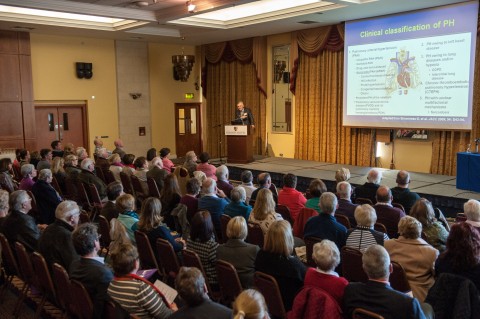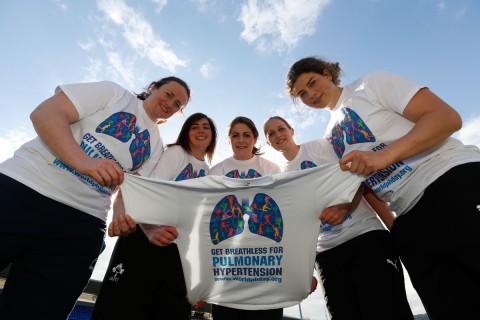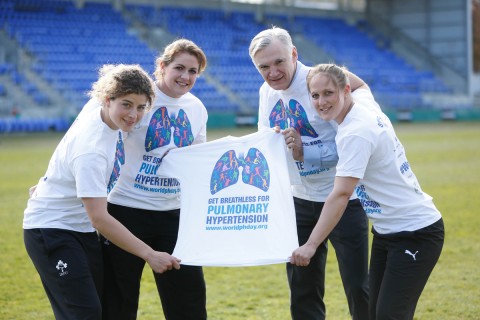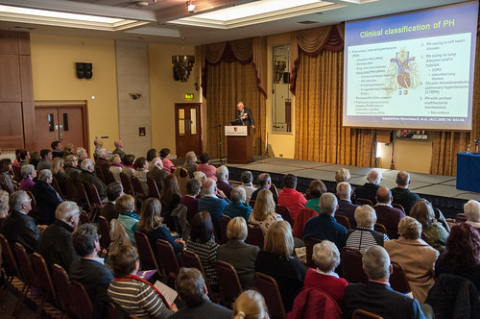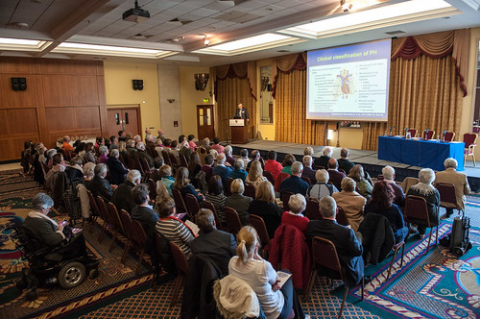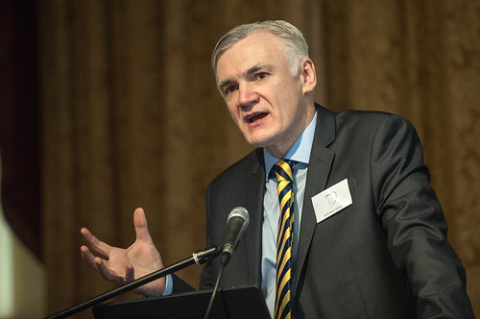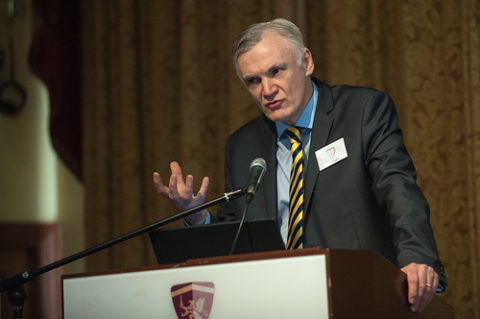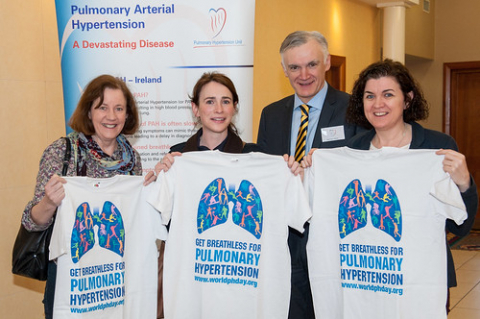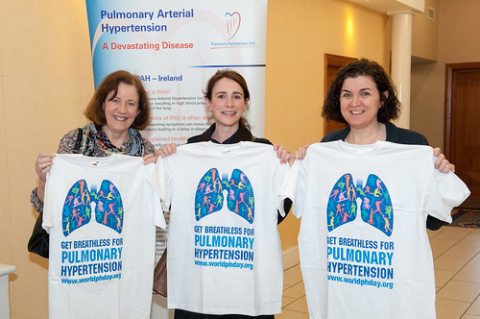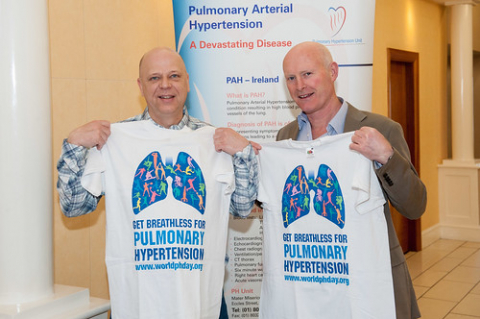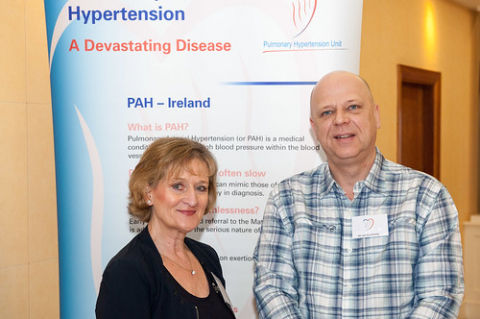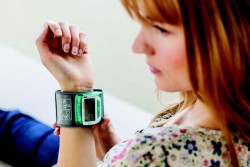Pulmonary Hypertension Unit

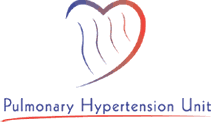
Uncategorized
European Report puts Ireland at bottom of league for Lung Health
05 November 2013
Give Lungs a Sporting Chance Urges Lung Health Alliance
Monday, 4th November, 2013: With 1 in 7 people in Ireland having an undiagnosed lung condition and Ireland having the third highest death rate from lung disease in Europe, causing 1 in 5 deaths, it is vital that people know how to maximise their lung health by taking simple steps, including regular exercise and avoidance of environmental exposures that damage the lung. This was the message from the Irish Lung Health Alliance at the launch of a campaign to promote lung health in Ireland through prevention and early diagnosis.
The campaign comes on the back of a European Report on lung health, which found that Ireland has one of the highest death rates from lung disease in Western Europe (ref1) and is marked by a particularly high prevalence of diseases such as asthma and cystic fibrosis as well as high hospital admission rates for COPD and respiratory infection and high death rates for interstitial lung disease, COPD and pneumonia(ref 2). Ireland also has the lowest number of adult and trainee respiratory physicians at 1.3 per 100,000 while the mean for Europe is 4.4 per 100,000(ref ³). In addition, recent research carried out by the Irish Lung Health Alliance adds further to this picture by showing that 1 in 7 people have an undiagnosed lung condition.
“Clearly the state of Ireland’s lung health leaves much room for improvement,” said Dr Edward McKone, Respiratory Consultant and President of the Irish Thoracic Society. “Our high prevalence, death and hospital admission rates, coupled with high levels of undiagnosed lung disease can be attributed to a number of factors, but awareness of how to prevent and manage lung disease and identify early warning signs is key.”
With this in mind the Irish Lung Health Alliance is hosting a series of public information lectures in Dublin, Cork, Limerick, Galway and Sligo beginning on Tuesday, 5th November 2013. The information events will highlight the importance of prevention and early diagnosis and the significant role that exercise can play in maintaining lung health. Olympic Gold medallist, Dr. Ronnie Delany is Ambassador for the campaign, which is also supported by fellow athlete Paul Hession. Although lectures are free booking is essential to avoid disappointment. To book your place please register online at www.lunghealth.ie. The event in the Mansion House will also be available by live webcast from the website.
“We tend to associate exercise with cardiac health, losing weight or preventing diabetes but exercise is also very important for the lungs whether you are healthy or have a lung condition. We would encourage the public to attend our information events to learn more about their lungs and the simple steps they can take to maintain lung health,” added Dr McKone.
Promoting the benefits of sport for your lung health, Dr. Ronnie Delany, ambassador to the campaign, said “Keeping active whether walking, running or simply working in the garden can contribute greatly to our general well being and is particularly beneficial to the lungs. As an athlete I have a great appreciation of the vital role of the lungs in sporting performance, therefore I am delighted to support this campaign to encourage people to look after their lung health through exercise and other simple steps.”
The Irish Lung Health Alliance comprises the Alpha One Foundation, the Irish Thoracic Society, Cystic Fibrosis Ireland, the Asthma Society of Ireland, the Irish Sleep Apnoea Trust, COPD Support Ireland, Irish Sarcoidosis Network, Irish Lung Fibrosis Association, Pulmonary Hypertension Ireland, the Irish Cancer Society and ASH Ireland.
This campaign is supported by Boehringer Ingelheim Ireland through an unrestricted grant.
The Public Information Lectures will take place at:
• Dublin – Tuesday, 5th November (6.30pm to 8pm) – The Mansion House, Dublin
A live webcast of this event will be available on www.lunghealth.ie
• Cork – Tuesday, 5th November (6.30pm to 8pm) – Clarion Hotel, Cork
• Sligo – Tuesday, 5th November (6.30pm to 8pm) – Clarion Hotel, Sligo
• Galway – Thursday, 7th November (6.30pm to 8pm) – Croi House, Galway
• Limerick – Monday, 11th November(6.30pm to 8pm) – Clarion Hotel, Limerick
For reference, please contact:
Marika MacCarvill – 086-1712568, marika@freerange.ie
Suzanne McCormack, CEO of the Irish Thoracic Society -086 8573927
About the Irish Lung Health Alliance research:
The Irish study conducted by the Irish Lung health Alliance and presented to the Irish Thoracic Society Annual Scientific Meeting is based on a survey of members of the public who availed of free lung function tests as part of an awareness campaign organised by the Irish Lung Health Alliance in 2012. This research was based on data from 10 sites that offered Spirometry (lung function tests) to members of the public. Analysis was carried out using survey questionnaires and lung function test results on 515 participants.
About the European Report – The European Respiratory Society’s European Lung White Book (published Sept, 2013)
1http://www.erswhitebook.org/chapters/the-burden-of-lung-disease/
2 http://www.erswhitebook.org/chapters/#pagesPARTCMajorRespiratoryDiseases
³ http://www.erswhitebook.org/chapters/medical-respiratory-specialists/
Caughoo Challenge
07 October 2013
Joanna Cornwall, Aidan Hayes, Michael Hayes and Caroline O’Connell took on the Caughoo challenge on 17th of August, raising money for the Pulmonary Hypertension Association. This was a 10km run from Sutton which brought runners to the top of the hill of Howth with beautiful views on Dublin bay.
Dr Caroline O Connell (second from left) is a Pulmonary Hypertension Research Fellow in the Centre for Lung Health in the Mater Misericordiae University Hospital.
Inis Oírr Micro Triathlon
04 September 2013
The residents of Inis Oirr organised a micro triathlon to support our Get Breathless for Pulmonary Hypertension Campaign. We’d like to offer our thanks to Paddy Crowe and all who helped organise and particpate in the event and for their generous contributions. The pictures illustrate that it seems to have been a great combination of fun and challenge! Paddy describes the event:
On Inis Oírr we organised a micro triathlon to raise awareness of Pulmonary Hypertension in our area. Children and adults took part in the micro triathlon race which began with a run on the beach, followed by a looped cycle,from which the contestants returned to the beach, to tag the swimmers who ultimately completed the race! Many of the contestants ran as a team of three, however a very confident few took on the race as a whole! There were national currach races also taking place on the island and Pulmonary Hypertension was also highlighted during the races. The Inis Oírr currach team were more than happy to promote Pulmonary Hypertension by wearing the T-Shirts on race day!
We spoke to the many spectators on the beach and explained to them what Pulmonary Hypertension was, what the symptoms were and how one may be misdiagnosed with asthma for example. We collected €305 on the beach as the races were taking place. Congratulations to CILLIAN ó CONGHAILE who came first place in the race. Cillian completed the race as a solo competitor!
Fundraising in Roscommon for Get Breathless Campaign
12 August 2013
Pictured is Charlie Finneran and his wife Bridie presenting a cheque to Professor Sean Gaine, Head of the National Pulmonary Hypertension Unit and Regina Prenderville of PHA Ireland. A huge thanks to Charlie and Bridie from Roscommon who raised a fantastic €2,430 for Pulmonary Hypertension. They raised the funds through a card game which was held in the Cam Community Centre and a sponsored walk in their local village. We’re not sure what card games were played but this is certainly gambling we approve of! The walk ended at Charlie Finneran’s family run ‘DERRYGLAD FOLK & HERITAGE MUSEUM’ where all participants enjoyed a cup of tea and refreshments. See some images from the event below.
Getting Breathless against a Breath Taking Backdrop
29 July 2013
The Templenoe Regatta was held on Valentia Island, Co Kerry on Sunday 14 July. This was a spectacular event, held in magnificent surroundings. All races are a true test of strength, endurance and team work and are a great attraction for crowds of supporters and spectators.
These pictures were taken of Leo Houlihan’s crew training on the island before they took part in the Templenoe Regatta on Sunday 14 July. They were happy to get truly breathless for PH while wearing our T Shirts during the race.
The team took part in the main race at the regatta called the Seine Boat Race – where the teams row for 30 minutes in often rough and choppy waters off the South Kerry coast. We are happy to report that Leo’s team secured 1st prize in the race – this is the 3rd year his crew has won the Seine Boat Prize. We greatly appreciate the support given by Leo and his team in promoting our campaign and hope you enjoy the images of the team taken against the breath taking backdrop.
They went to Hell and Back!
18 June 2013
And now we have the documentary evidence! Our eight brave volunteers did indeed go To Hell and Back last saturday June 15th. Taking on the 10K challenge at Kilruddy Estate in Wicklow on our behalf were Niamh Prendeville, Ron Doyle, Ciara McDonnell, Elaine McDonnell, Stephen Fogarthy, Conor McIntyre, Courtney Flynn and Kate Faughnan and (being biased) we think they stood out among the participants in their Get Breathless for PH t-shirts – well at least until the mud, sweat and tears took over. We salute their tenacity and dedication to the cause and offer our heartfelt thanks that they did indeed Get Breathless for Pulmonary Hypertension.
We think you’ll agree the pictures display the evidence of their commitment to fundraising and raising awareness of Pulmonary Hypertension. Perhaps you would like to participate in some similar way to support us if so contact us by e-mail pha@mater.ie . Or perhaps make a donation to this worthy cause which you can do on this link to our donation page at the Mater Foundation. Please make sure to select the Pulmonary Hypertension Appeal from the dropdown list.
See more images of the the Hell to Back event 2013 here.
PH support from the Mini Marathon Ladies
07 June 2013
Monday June 3rd saw a huge number (close to forty thousand) of ladies take to the streets of Dublin to partake in the Flora 2013 Women’s Mini Marathon. Taking on the 10K course and the soaring (for Dublin!) temperatures, supporting their charities of choice was the prime motivation for many paticipants and we were lucky enough to have some of the ladies supporting the Get Breathless for PH campaign. They cut a determined and striking pose in their Pulmonary Hypertension awareness campaign T-shirts as the pictures below attest to and we want to thank them for their support.
Four of our supporters were Mother and Daughter teams and we applaud them for putting Get Breathless for PH at the centre of their Bank Holiday ‘family outing’.
Afternoon Tea in Cork
07 June 2013
Susan Sheehan and her family and friends organised an afternoon tea on 5 May – World PH Day. Susan was overwhelmed by everyone’s generosity – they raised a total of €3,250 for the Pulmonary Hypertension Association. Her children and their friends were very busy on the day and Susan said they were an enormous help to her. A friend of Susan’s sells aloe vera products – she brought some along on the afternoon and sold them. She gave all of the profits to PH.
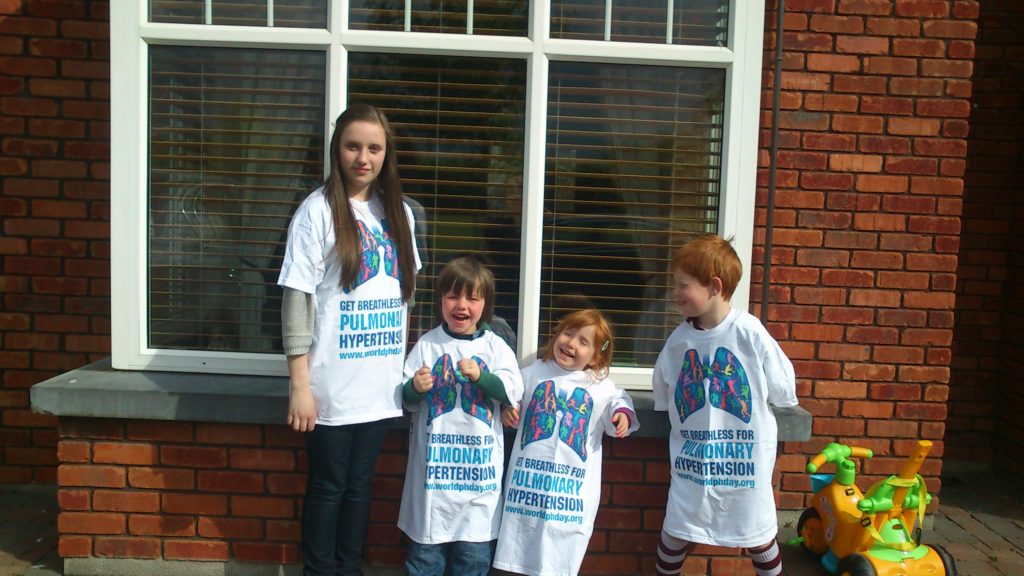
We are most grateful to Susan Sheehan and her family for organising this event and particularly appreciative to her neighbours and friends for their kindness.
Update 20th August 2013: We have received a further €500 from Susan bringing her grand total to €3,750. We are very grateful for all her efforts in fundraising and supporting us.
To Hell and Back for PH campaign
30 May 2013
We have some very brave volunteers prepared to go to ‘Hell and Back’ to support our Get Breathless for PH campaign on this coming June 15th. Ten young people (so far) will be undertaking what might be considered Ireland’s toughest 10k run, jump, climb, wade etc. course in order to support PHA Ireland’s 2013 PHA awareness campaign.
Take a look at what is in store for our volunteers on the hellandback.ie website. I think we can safely say they will surely ‘Get breathless for PH’ and we hold out no hope that our beautifully logo’d (white) t-shirts will be white for very long! So maybe you too are up for the challenge and would consider bolstering the number of our volunteers by pitting yourself against the course while supporting a very worthy cause? Or perhaps you think our volunteers have to be a little mad to attempt this but want to show your admiration and support by donating to the campaign?
If you wish to participate you can find out more by contacting Regina Prenderville, Pulmonary Hypertension Association – Ireland by e-mail pha@mater.ie or mobile 087 637 6563. Alternately you may wish to donate by clicking the Donate Now Button above which takes you to our fundraising page at the Mater Foundation – please be sure to select the Pulmonary Hypertension Appeal on the drop down list.
Watch this space, we will bring you updates and pictures of how our participants get on.
Riverdance Ladies support ‘Get Breathless’ Campaign
08 May 2013
Congratulations to Maeve O’ Donnell (Donohoe) who got married on Saturday – and what did she do the day after her big day? She took time out with her bridesmaids and friends to show their support for the ‘Get Breathless for PH’ campaign. Of course not only are Maeve and her friends part of the bridal party but also members of Riverdance. We wish Maeve every happiness and are very grateful that Susan Ginnety Sheridan, Zara Curtis, Catherine Collins and Catherine O’Brien took some time out with Maeve to show their support for our campaign. This will not be the end of it, so keep an eye on our website for further news on how the Riverdance Ladies will be supporting ‘Get Breathless for PH’. Rememer if you would like to organise an event – please contact Regina Prenderville, Pulmonary Hypertension Association – Ireland by e-mail pha@mater.ie or mobile 087 637 6563
Many patient journeys – one voice – 2013 Patient Symposium
08 May 2013
The recent ‘Pulmonary Hypertension Symposium for Patients and their Families’ event’ in Dublin ahead of World Pulmonary Hypertension (HP) Day saw experts in their fields address a packed meeting on how patient groups can use their collective voice to inform health policies and improve the lot of the PH patient overall.
Pictured above are Mr. Iain Armstrong, PHA UK and Dr. Noel McCaffrey, DCU who both spoke at the event.
In the article below you can read a description of the day’s proceedings or alternately you can download a version here (PDF – portable document format).
The Seminar, held in the Grand Hotel, Malahide, heard from Prof Seán Gaine, Consultant Respiratory Physician at the Mater Hospital, on ‘What is Pulmonary Hypertension and How do we Treat It?’. Prof Gaine was followed by Mr Iain Armstrong, Chairman of the Pulmonary Hypertension Association UK. Mr Armstrong delivered two distinct presentations: ‘The Patient in the Middle of the Riddle of PH’; and ‘The Journey for the PH Patient and the Role of the Support Group’. Dr Noel McCaffrey, Sports Medicine Physician and Medical Director of BreatheSmart at Dublin City University, delivered a talk on ‘The Importance of Exercise in Chronic Illness Rehabilitation’ and the symposium was addressed finally by Ms Karen Redmond, Consultant Cardiothoracic Surgeon with the Mater Hospital, who spoke on ‘Lung Transplantation for PH’.
Having thanked the attendees for coming — some of whom had travelled considerable distances — Prof Gaine stressed the importance of coming together as a group. “There was a recent example of the power of patient groups with the recent issue of a drug to treat cystic fibrosis,” he said. “The power of that group of patients eventually enabled that drug to be available so the voice of patients should not be underestimated.”
He also offered his thanks to event organiser Regina Prenderville, explaining that she had recently retired from a previous role, allowing him to opportunistically secure her services. “It really is great to have her as someone who can focus on the work of raising awareness,” said Prof Gaine. He also thanked the speakers for attending and provided a brief profile of their respective positions and particularly mentioned Mr Armstrong, a founder of the UK group, as “very supportive and encouraging of what patients, their families and doctors can achieve when they get organised and get together”. Dr McCaffrey, he observed runs vital exercise programmes and such therapy is emerging as a new treatment for PH. Ms Redmond, he told the attendees, would provide an important clinical viewpoint as a transplant surgeon with a particular interest in PH.
Different for everyone
“PH is different in everyone,” observed Prof Gaine in opening his presentation. “Sometimes it can be the only disorder a person is suffering with, while in other cases, there may be other comorbidities involved.” Prof Gaine provided a clinical overview of the nature of PH: “It involves a narrowing of the blood vessels, which are so small as to make them impossible to stent. It is clinically important to note that with Group 1 PH patients, there is narrowing of the vessels in the lung,” he continued. “With Group 2 patients, the left side of the heart is affected, slowing down the blood flow through the lungs and this is the most common form of PH seen in Ireland. Group 3 patients have lung disease, while Group 4 patients commonly experience a clot in the leg, which when it ends up in the lung can block and increase the pressure.” He explained that for this latter cohort of patients, they are most often sent to the UK (Papworth) for treatment because of their experience and outcomes.
“The symptoms of PH can be very vague, which can lead to a delay in diagnosis,” Prof Gaine explained. “The delay to diagnosis can typically be two years, so this is one reason why it is so important to organise events like this to help raise awareness.” He also revealed that for the first time, a database on PH is being established in conjunction with UK (NHS) in order to benchmark the quality of service currently being offered to Irish PH patients with their UK counterparts. “Although generally, Ireland fares as well as other EU countries in terms of outcomes,” said Prof Gaine, who sees between 200 and 300 people at his clinic every year.
Treatment options
Prof Gaine then shared with the attendees an example of an echocardiogram image, pointing out what a clinician sees in a case where the right-heart is enlarged, explaining his system of examination and diagnosis. “The type of treatment then depends on the type of PH the patient is suffering with,” he explained. “Sometimes inhalers are appropriate, whereas other times, drugs to open up the thickened blood vessels are required.” These drugs might include agents to block the production of endothelin, which constricts blood vessels, while other drugs can increase nitric oxide activity. Other agents might reduce prostacyclin production. “Sometimes all three are used in combination, depending what we discover in the range of tests,” said Prof Gaine. In terms of prostacyclin, he observed that nurses “are excellent” at managing any pain that might be associated with this drug, which might possibly be administered via a chronic indwelling cather.
Looking to the future, Prof Gaine revealed that new drugs are being developed that will change the way PH is managed by clinicians and the patients themselves, and that studies are ongoing to assess the effectiveness of these therapies — and this could be where patient advocacy could play an important role. “Some of the drugs being studied may be shown to have too many side-effects and that would be unacceptable because treating PH is not just about drugs, it is about treating people,” said Prof Gaine, who has worked with the Olympic Council of Ireland. “Athletes are very careful about how they look after themselves and in a way, PH patients can care for their diets and lifestyles with the same attention as these athletes.”
He concluded by looking to the future on a positive note: “The next 10 years will be very important. In laboratories, we can actually cure PH in mice and rats, which have similar biological characteristics to humans. Some day, we may be able to cure PH but we have a lot of work still to do and are looking for markers to predict the development of PH, but the medical profession and patients need to work together.”
Collective voice
Mr Armstrong opened his presentation with a call to PH patients in Ireland to use their experiences to make their collective voice heard. “I passionately believe that patients are an under-used resource,” he said. “The patient is part of something bigger than the individual and the second part of my talk will address what you can achieve as a patient group.” Presenting slides illustrating the blood vessels in a patient with PH, he continued: “Do we treat PH as a disease or an illness? This is not semantics, because we can do all kinds of tests for the disease, but the effects of the illness are what the patient has to live with every day.”
He described the attendees as “an unusual group”: “This is because each PH patient has to live with their own individual needs.” Mr Armstrong then presented data from the ImPAHct study into pulmonary arterial hypertension (PAH) and its impact on aspects of the sufferer’s quality of life, rather than the clinical disease. “A diagnosis of PH means an uncertain future,” he said. “There is also a financial impact, as 75 per cent of people in this study said the illness had a significant impact on their ability to work. If you have money worries at the same time as having this illness — people might be wondering how they are going to pay their bills, for instance — this can have a major impact on quality of life.”
He noted that services for patients with PH had changed rapidly over the past 10-to-20 years and emphasised the individuality of each PH patient. “We all have our own unique life story, our own beliefs and thoughts on our futures,” he said. “PH is most effectively managed with good relations between the patient and the doctor; this is not a ‘quality’ thing, it is just imperative to achieve better outcomes. In some parts of the world, managing PH is just about issuing a prescription, but it much more than that — PH patients can sometimes be overwhelmed by a diagnosis.”
Patients’ voice
With this, Mr Armstrong invited the attendees to consider and reflect on how they felt when they were first diagnosed. “In addition, some employers simply don’t understand what it means when an employee is diagnosed with PH, similarly with insurance companies,” he commented. “Don’t forget the importance of the patients’ voice and the difference that can make to healthcare policies — for example, moves are afoot in the UK to improve the social benefits policy for people with PH and the patient group has been very important in that.”
In academic circles, the patient voice is also crucial. “A patient group actually had a paper published in the British Medical Journal, which showed that 50 per cent of patients waited 11 months on average before going to their GP. They often just held on to their symptoms and it was often the husband or wife who said something like, ‘Something is not right with you’.”
The challenge, said Mr Armstrong, was for medical professionals to recognise the symptoms early, as he noted that 50 per cent of PH patients had to see four or more doctors before a diagnosis was made, a situation he described as “unforgiveable”.
“Quality of life means different things to different people,” he said. “Specialist care can be expensive and patients often have to travel some distance to get it. On average, there can be two days of specialist care and the other 363 days are self-management by the patient and it’s important for you to spot it when the symptoms change.” Again emphasising the individual rather than the clinical disease, Mr Armstrong quoted Sir William Osler, who once said: “Ask not what disease the person has, but rather what person the disease has.”
Oxygen use
His presentation was followed by a lively and informative Q&A session. One attendee — who’s diagnosis took two years — asked the panel why the post of ‘Consultant General Physician’ had disappeared in recent decades. Prof Gaine suggested that there may be a move back in this direction in coming years with the post of acute medicine physician. Another patient enquired as to the use of oxygen in symptom control. Prof Gaine replied that for some people, oxygen was crucial while for others, it provided a certain sense of comfort, but the question was hard to answer because of the various different types of PH. Mr Armstrong added that according to a survey in the UK, oxygen could sometimes make people feel isolated and they may not “be bothered with the hassle” when they were going on holiday, for example.
Dr McCaffrey’s presentation was preceded by Prof Gaine revealing that in approximately six months, guidelines will be published that indicate exercise as a form of therapy in PH.
Exercise and PH
Dr McCaffrey began by stating that there is not a single illness where exercise cannot play a therapeutic role. He also stated his own special interest in the role of a patient group in pushing the PH agenda: “It’s extremely important for a patient group to have ownership of the issue and help to design treatment policy,” he told the meeting. “One of the benefits of engaging in an exercise programme is that it limits isolation because people go to their exercise classes and meet many other interesting people.”
Dr McCaffrey elaborated on the role of exercise in disease treatment and prevention: “Some cancers are driven by fat content,” he explained, “and exercise can also help to counteract cognitive decline. In fact, there is only one cancer that is common in people who exercise a lot — skin cancer.”
Exercise can also greatly improve quality of life, said Dr McCaffrey, “If you have reduced strength, you will have trouble doing certain tasks, such as getting up, using the toilet and so on. If you have reduced flexibility, you may have trouble reaching things and bending over.” Dr McCaffrey presented slides showing that no matter what age, rate of physical and cognitive decline can be slowed by 1,000 per cent in a structured exercise programme.
His clinic in DCU deals with people suffering with chronic organ failure, social issues, psychology issues and even incorporates spiritual aspects. “There is a Chaplain getting involved soon, so that’s great,” said Dr McCaffrey. He presented examples of chronic disease patients mixing with elite athletes — such as Dublin footballer James McCarthy — in his clinic, and emphasised: “Sometimes people say, ‘Doc, I’m not getting any better’, but in fact halting a decline in a disease can in itself be a very positive outcome. One of the things that stop PH patients exercising is that if their lungs are incapable of supporting five minutes of exercise, this can become frustrating for them. So we break that down into five one-minute blasts to make it less frustrating for the patient.”
Aerobic capacity
It has also been shown that even doing strength exercises alone can improve aerobic capacity, said Dr McCaffrey, because the harder muscles work, the greater the increase in lactate capacity. “Using oxygen can also make it easier to exercise,” he explained, presenting data (Grunig et al, 2012) showing huge improvements in quality of life across a range of patient groups.
“The most common questions we are asked are, ‘What can we do about my sore knee, sore back, sore hand’, and so on. Remember that any of these can normally be helped by exercise. If there is an improvement in quality of life, strength and flexibility, then that is a small price to pay for an evening of stiffness,” he concluded.
Humble beginnings
Mr Armstrong opened his second presentation, which focused on what a patient group can do to champion improved services, although he was keen to give a truncated talk to allow for more questions from patients. “PHA UK had humble beginnings,” he told the room. “It was almost like a peer support group of about half a dozen people. They just got together to talk about the practicalities of everyday life. Now the organisation has 2,500 members and is a great forum to make things happen. The real benefit is to link people up and curb isolation, which can even occur in the family setting.”
Addressing the patient journey, he observed that for most people the diagnosis is the first part of this. “Often patients and their families distrust medicine so the initial six months is usually spent getting people on board and convincing them that we can help. The second part is administering medical treatment,” he said. “I like subcutaneous treatment because when it works, it works really well but the biggest change in PH treatment in the past 15 years has been to move from treating PH as an acute illness to a chronic condition, which puts exercise on the agenda, as nobody would have suggested exercise as a form of treatment for an acute illness.”
He called on the attendees to use their lobbying power: “As a patient organisation, you have to understand the journey, you need to produce resources such as booklets and websites. World PH Day is approaching and we have to increase awareness and develop a strategy to ensure your voice is heard.”
Mr Armstrong concluded: “Treatments are constantly changing but we have a fight on our hands to get access to these drugs, but don’t underestimate the power of the patient voice — talk to the politicians; they are fragile in some respects and don’t like bad publicity because it affects the ballot box.”
A second Q&A session followed, with one attendee asking why all treatment pathways were not used all together in PH. Prof Gaine replied that there were three specific, high-tech drugs but using all of these together could produce too many side-effects and make the patient’s quality of life worse. Therefore, they were introduced sequentially and a determination made about the need for a second agent if the progress wasn’t satisfactory. The next five years should shed more light on this, he replied.
Another PH patient asked whether personalised medicine could play a role in PH treatment. Prof Gaine responded that this was a “new frontier” because different people respond to different drugs. Another attendee asked whether there was any financial help available for patients who need to use oxygen 24/7, in light of the impact this has on electricity costs. The answer was that unfortunately, no aid was available to Irish PH sufferers but in the UK, patients could receive a 10 per cent discount on their electricity bills.
Transplants in PH
The final presentation was delivered by Ms Karen Redmond, who opened by declaring her special interest in PH and outlined new techniques in transplantation. “Organs are a bit like engines; sometimes they just need to be tweaked and sometimes they just have to be replaced,” she told the room. “There has been a lot of work in the area of lung transplants (LT) in the last few years, despite very little money going into LTs in Ireland. The National Transplant Advisory Group has put a business plan to the HSE so we will see what happens there.”
The transplantation process begins with “the gift of donation, which is a gift of life,” said Ms Redmond. “Often, a grieving family can take great comfort from knowing that they have done this and this is reinforced when they sometimes receive thank-you letters from the recipient.”
In organisational terms, she explained: “The Intensive Care Society has donor management guidelines but we need dedicated link nurses who have accountability; at the moment, people do this in their free time, but this needs to be a more formal role. Irish people are very generous as donors and the amount of offers we get is very high, relative to the amount of funding and support we receive.”
Ethics and procedures were also important, she stressed. “The National Ethics Committee outlines different donor circumstances and guidelines on non-brain-stem death. Some people who are in an Intensive Care Unit will never realistically make it out of there, for example. We also need to have some quality control so that we can benchmark ourselves against other countries,” said Ms Redmond.
“With the EU Directive, hopefully we can organ-share and there may be an opportunity with Northern Ireland and the UK and others, where we could become the ‘net importer’ instead of the ‘net exporter’ of organs.”
Strength and body weight
Transplants are only necessary in a small amount of patients, she explained, and there can be contraindications in patients who have cancer or cardiovascular disease. In PH patients, this can also be the case because of comorbidities. “I can give people pristine lungs, but strength and body weight are important for survival,” she commented. Ms Redmond then presented a range of slides and talked through the donation and transplant procedure. “There is a discussion that takes place on the night with the medical team and recipient,” she said. “Irish people sometimes have the idea that they should be on as little oxygen as possible but oxygen is nutrition for the lungs. When the lungs are replaced, the right side of the heart recovers remarkably quickly and people do much better after transplantation if they comply with their medication.”
On treatment options, Ms Redmond said that some patients are given a small hole in the right-heart to relieve pressure and this is not routinely closed during the operation because this can increase surgical stress.
“Transplant offers a better quality of life and people can live longer but we can run into problem with rejection or infection,” said Ms Redmond.
“We would love to have a crystal ball to know how long someone will be on a transplant list and how long someone will get from their native organs.” She outlined the profile of the “perfect donor”; a non-smoker, less than 55 years old, with a clear bronchoscopy. “One of the initiatives we have introduced is the idea of extended or ‘marginal’ donors, where we can use lobes instead of the whole lung,” she explained. “We sometimes put a patient on a bypass machine for the operation because when they come for transplant, their PH will be at a very advanced stage.”
To conclude, Ms Redmond then presented a case study of a 19-year-old cystic fibrosis patient, including x-rays and a video of the perfusion, and outlined the peri-operative supports in place, which involved a “very cautious and safe approach”.
Exercise prescription
In the final Q&A session, one patient expressed frustration that she could not find an exercise programme that would take her on. Prof Gaine revealed that work will be done on preparing a prescription that would allow people to access these programmes, and that this would hopefully happen within the next year.
Another attendee asked about the possibility of a sponsorship programme, or mentor scheme, for PH patients who were misdiagnosed. Prof Gaine responded that it may be difficult to “link people up” because of confidentiality issues, and this was another strong reason for the existence of the support group.
A number of the attendees expressed their gratitude to the speakers and organisers and stressed how useful the Symposium had been for them and their families, with the exercise programme generating a lot of interest.
Poignantly, one interesting aspect of the Symposium involved four empty chairs; rather than taking their seats on the stage behind a table, all the speakers rather opted to sit with the PH patients and their families as they listened to each other’s presentations and fielded questions.
This epitomised the spirit of the event — patients, their families and medical professionals together in the drive to improve the lives of those with PH.
Irish Ladies Rugby Team ‘Get Breathless’
01 May 2013
The victorious Irish Ladies Rugby Team (winners of the Grand Slam & 6 Nations Championship) were happy to get breathless when they launched the ‘Get Breathless for Pulmonary Hypertension’ campaign at the Old Wesley training grounds. Ailis Egan, Nora Stapleton, Fiona Coghlan, Shannon Houston and Jenny Murphy of the 2013 Ladies Rugby Grand Slam team kindly gave of their time to launch the campaign and raise awareness of Pulmonary Hypertension and its impact on patients and their families.
PH (Pulmonary Hypertension) is a rare lung disorder in which the arteries that carry blood from the heart to the lungs become narrowed, making it difficult for blood to flow through the vessels. This disorder occurs in individuals of all ages, races and ethnic backgrounds although it is much more common in young adults and is approximately twice as common in women as in men.
Symptoms of pulmonary hypertension do not usually occur until the condition has progressed. The first symptom of pulmonary hypertension is usually shortness of breath with everyday activities (e.g climbing the stairs) chest pain & fatigue. Unfortunately the symptoms of PH are often mistaken for those of less serious conditions such as asthma. Many patients spend 2-3 years seeking an accurate diagnosis. Delay in Diagnosis can be fatal and without treatment the average life expectancy is 2.8 years. Many patients will see 3 or more physicians over a 2 year period before they are properly diagnosed with PH.
World PH Day will be held on 5 May and the theme throughout the year will be ‘Get Breathless for PH’ – we are encouraging all those with a love of sport to organise something to help increase awareness of this disorder.
Activities are being organised throughout the country which we hope will increase awareness and disseminate knowledge of the disease to facilite early diagnosis and promote research that will help find the cure for Pulmonary Hypertension. The Irish Rugby Ladies were joined by Prof. Sean Gaine, Head of the National Pulmonary Hypertension Unit at the campaign launch.
If you would like to organise an event – please contact Regina Prenderville, Pulmonary Hypertension Association – Ireland by e-mail pha@mater.ie or mobile 087 637 6563
See more images of the launch here.
Impressive turn out at the PHA 2013 Patient Symposium
01 May 2013
There was a large turn out at The Grand Hotel, Malahide on the 27th April with nearly a hundred delegates from all over Ireland attending the 2013 Pulmonary Hypertension Association Ireland Symposium for patients, families and friends. An impressive set of speakers made for very informative sessions and an opportunity for the delegates to question the expert speakers. We”ll be sharing more of the content of the Symposium shortly online here. Read the programme for the day here.
2013 Pulmonary Hypertension Symposium
16 April 2013
We will be gathering at the Grand Hotel Malahide on the 27th April for the 2013 PULMONARY HYPERTENSION SYMPOSIUM for patients and their families. We have an excellent line up of speakers to both present and answer the attendees’ questions and concerns. Please see the programme for the symposium below or alternately download a PDF version here Programme – Patients & Family Symposium 2013
For Patients & their families
Saturday, 27 April 2013
Venue: Grand Hotel, Malahide
Programme
09.20 Welcome address
09.30 What is Pulmonary Hypertension and how do we treat it?
Prof Sean Gaine
Consultant Respiratory Physician
Mater Misericordiae University Hospital
10.00 The patient in the middle of the riddle of PH – Impact Survey
Mr Iain Armstrong
Chairman
Pulmonary Hypertension Association UK
10.30 Questions & Answers
11.00 Coffee
11.30 The importance of exercise in chronic illness rehabilitation
Dr Noel McCaffrey
Sports Medicine Physician &
Medical Director BreatheSmart at Dublin City University
12.00 The journey for the PH patient & the role of a support group
Mr Iain Armstrong
Chairman
Pulmonary Hypertension Association UK
12.30 Lung Transplantation for PH
Ms Karen Redmond
Consultant Cardiothoracic Surgeon
Mater Misericordiae University Hospital
13.00 Lunch
Advances in Pulmonary Hypertension
12 November 2012
In an article in the Irish Medical Times Priscilla Lynch looks at advancements in pulmonary hypertension treatement and care including an in depth interview with Professor Sean Gaine.
Read a copy of the article by downloading here or in the Irish Medical Times online here
Running for Pulmonary Hypertension
31 August 2012
Please sponsor Lynn Fox, the latest member to the PH nursing team. Lynn is running the Dublin city marathon on the 29th October 2012 and raising much needed funds for the PH Unit at the Mater Hospital. Sponsorship cards are available by contacting the unit on 01-8034420, or by post.Your support is greatly appreciated and we will keep you up to date on Lynn’s progress……
Out Patient Clinic
09 July 2012
The Pulmonary Hypertension out patient clinic will now take place in the new extension of the main hospital. It can be accessed from the North Circular Road and the clinic is located on Level 1, Clinic 1. We look forward to seeing you at this wonderful new state-of-the-art facility. The PH Unit remains at its current location, 56 Eccles Street, if you have any queries in relation to your appointment please do not hesitate to contact us.

